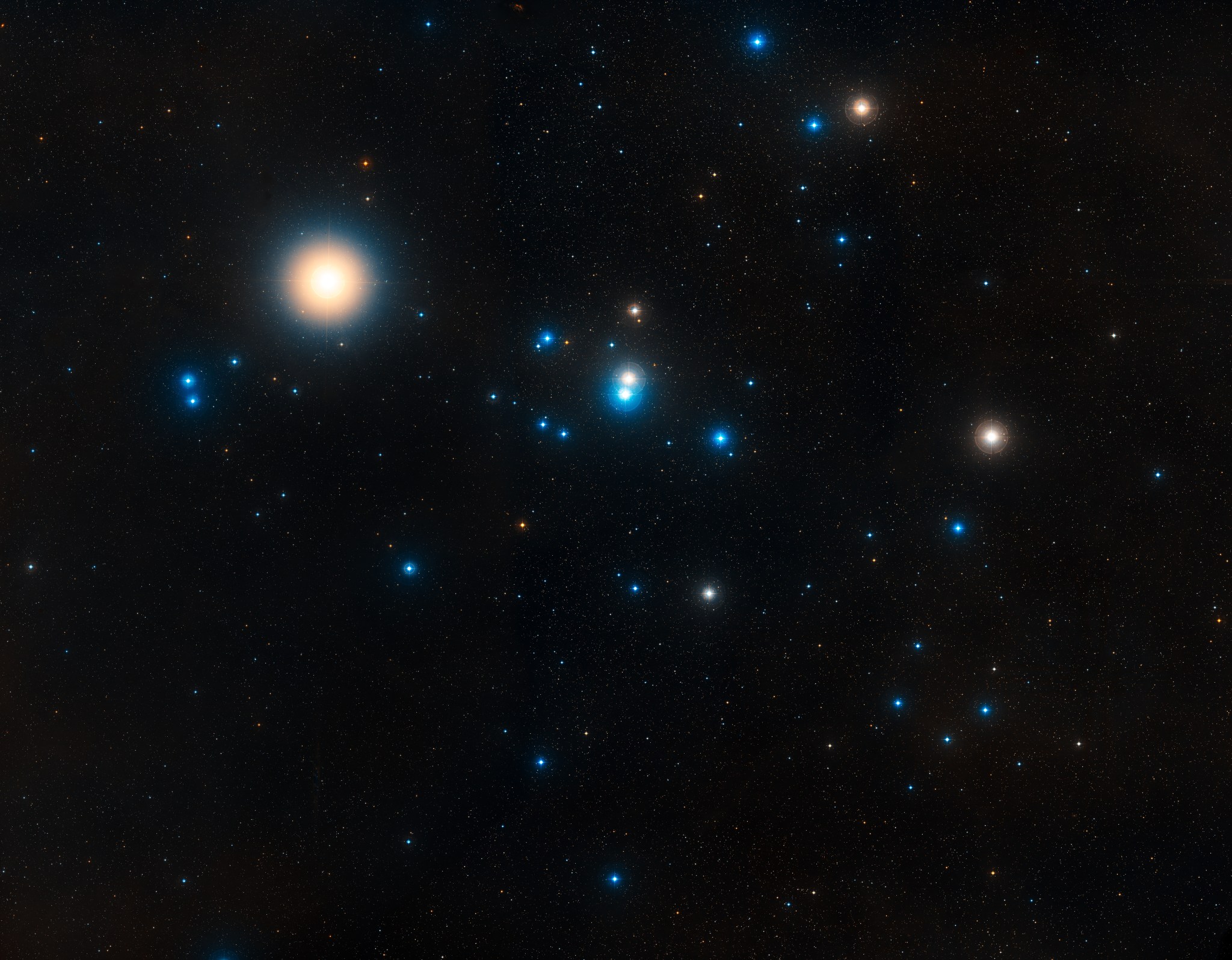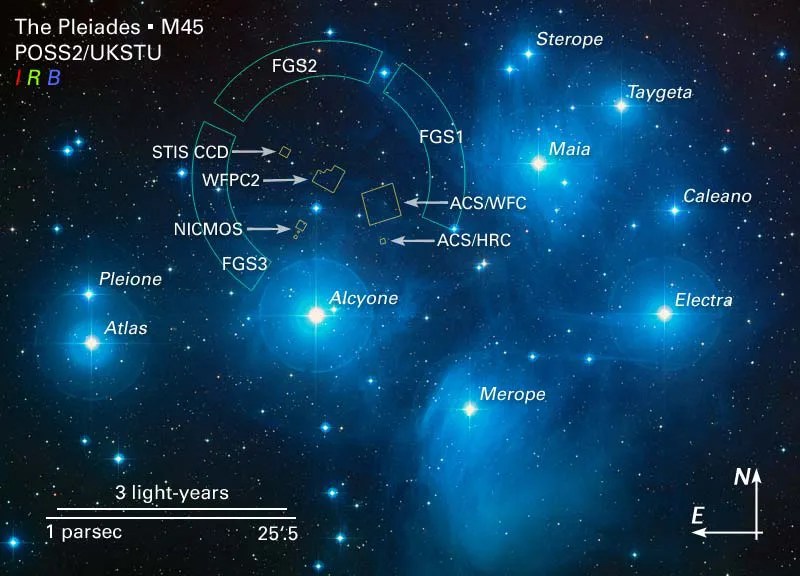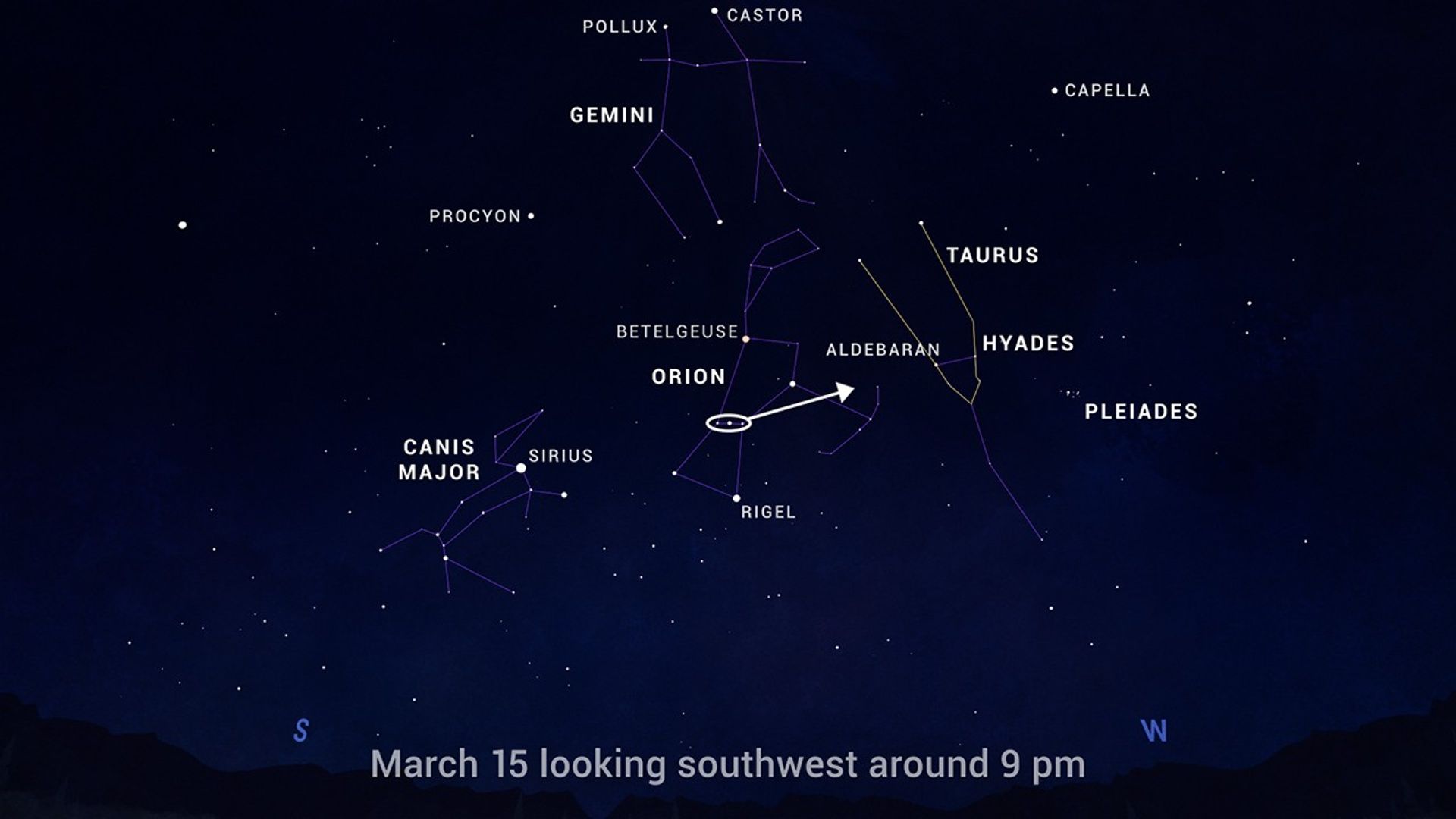
Orion is the last of a trio of striking star patterns to rise during the late fall and early winter months, preceded by the diminutive Pleiades and larger Hyades in Taurus. All three are easily spotted rising in the east in early January evenings, and are textbook examples of stars in different stages of development.
As discussed previously, the famous Orion Nebula (M42), found in Orion’s “Sword,” is a celestial nursery full of newly-born “baby stars” and still-incubating “protostars,” surrounded by the gas from which they were born. Next to Orion we find the Hyades, in Taurus, with their distinctive “V’ shape. The Hyades are young but mature stars, hundreds of millions of years old and widely dispersed. Imagine them as “young adult” stars venturing out from their hometown into their new galactic apartments. Bright orange Aldebaran stands out in this group, but is not actually a member; it just happens to be in between us and the Hyades. Traveling from Orion to the Hyades we then find the small, almost dipper-shaped Pleiades star cluster (M45). These are “teenage stars,” younger than the Hyades, but older than the newborn stars of the Orion Nebula. These bright young stars are still relatively close together, but have dispersed their birth cocoon of stellar gas, like teenagers venturing around the neighborhood with friends and wearing their own clothes, but still remaining close to home - for now. Astronomers have studied this trio in great detail in order to learn more about stellar evolution.

Figuring the exact distance of the Pleiades from Earth is an interesting problem in astrometry, the study of the exact positions of stars in space. Knowing their exact distance away is a necessary step in determining many other facts about the Pleiades. The European Space Agency’s Hipparcos satellite determined their distance to about 392 light years away, around 43 light years closer than previous estimates. However, subsequent measurements by NASA’s Hubble Space Telescope indicated a distance of 440 light years, much closer to pre-Hipparcos estimates. Then, using a powerful technique called Very Long Baseline Interferometry (VLBI), which combines the power of radio telescopes from around the world, the distance of the Pleiades was calculated to 443 light years. The ESA’s Gaia satellite, a successor to Hipparcos, recently released its first two sets of data, which among other findings show the distance close to the values found by Hubble and VLBI, possibly settling the long-running “Pleiades Controversy” and helping firm up the foundation for follow-up studies about the nature of the stars of the Pleiades.
You can learn more about the Pleiades in the Universe Discovery Guide at bit.ly/UDGMarch, and find out about missions helping to measure our universe at nasa.gov.
To find these gorgeous clusters, locate Orion's famous “Belt” of three bright stars. Then, look west Orion to find both the Hyades and the Pleiades. Binoculars will bring out lots of extra stars and details in all three objects, but you can even spot them with your unaided eye!
Originally Posted by Dave Prosper: December 2019
Last Updated by Kat Troche: November 2023



























